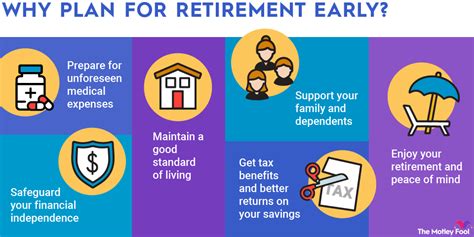
Facing retirement in five years? Financial advisors recommend focusing on two crucial steps: maximizing savings and strategically planning withdrawals to ensure long-term financial security.
For those within five years of retirement, the urgency of securing their financial future intensifies. Financial advisors emphasize that while this timeframe necessitates a focused approach, it also presents a viable opportunity to solidify retirement plans. Two key strategies stand out: aggressively maximizing savings and developing a well-thought-out withdrawal strategy. These measures can significantly impact the sustainability of retirement income and overall financial well-being.
Maximizing Savings: The Final Push
The principle of maximizing savings is a cornerstone of retirement planning, but it takes on heightened importance as retirement nears. Individuals approaching retirement should explore all available avenues to increase their savings rate, regardless of their current financial standing.
-
Retirement Account Contributions: One of the most effective strategies is to maximize contributions to employer-sponsored retirement plans, such as 401(k)s, and individual retirement accounts (IRAs). For 2024, the IRS allows individuals under 50 to contribute up to \$23,000 to a 401(k) and those 50 and over can contribute \$30,000, reflecting the “catch-up” provision designed to help older workers boost their savings. Contributions to traditional 401(k)s and IRAs are often tax-deductible, reducing current taxable income while allowing savings to grow tax-deferred. Roth 401(k)s and Roth IRAs, on the other hand, offer tax-free withdrawals in retirement, providing a different set of benefits depending on an individual’s tax situation.
-
Employer Matching: Many employers offer matching contributions to employee 401(k) plans, effectively providing “free money” that can significantly boost retirement savings. It is crucial to take full advantage of employer matching programs by contributing enough to receive the maximum match offered. For example, if an employer matches 50% of contributions up to 6% of salary, an employee earning \$100,000 should contribute at least 6% (\$6,000) to receive the full employer match of \$3,000.
-
Health Savings Accounts (HSAs): HSAs, available to individuals enrolled in high-deductible health plans, offer a triple tax advantage: contributions are tax-deductible, earnings grow tax-free, and withdrawals for qualified medical expenses are tax-free. HSAs can be used to save for healthcare expenses in retirement, which can be a significant cost. For 2024, the contribution limits for HSAs are \$4,150 for individuals and \$8,300 for families, with an additional \$1,000 catch-up contribution for those age 55 and older.
-
Taxable Investment Accounts: In addition to tax-advantaged retirement accounts, taxable investment accounts can provide another avenue for saving. While contributions to these accounts are not tax-deductible, they offer flexibility in terms of investment choices and withdrawals. Individuals can invest in stocks, bonds, mutual funds, and other assets, depending on their risk tolerance and investment goals. Capital gains and dividends are taxable, but these accounts can provide a source of income in retirement that supplements withdrawals from retirement accounts.
-
Reducing Expenses: Identifying areas to cut back on spending can free up additional funds for savings. Even small reductions in expenses can add up over time. “Look closely at your spending habits and identify areas where you can cut back,” suggests a financial advisor. This could involve reducing discretionary spending, such as dining out or entertainment, or finding ways to lower fixed expenses, such as insurance premiums or utility bills.
-
Delaying Social Security: While not directly related to savings, delaying Social Security benefits can significantly increase the amount of income received in retirement. Individuals can claim Social Security benefits as early as age 62, but delaying until full retirement age (FRA), which is 67 for those born in 1960 or later, results in a higher monthly benefit. Delaying benefits even further, until age 70, results in the maximum possible benefit, which can be up to 32% higher than the benefit received at FRA.
Strategic Withdrawal Planning: Making Your Savings Last
Developing a sound withdrawal strategy is crucial to ensuring that retirement savings last throughout retirement. This involves carefully considering factors such as life expectancy, inflation, investment returns, and anticipated expenses.
-
The 4% Rule: A commonly cited guideline is the 4% rule, which suggests withdrawing 4% of retirement savings in the first year of retirement and then adjusting that amount for inflation in subsequent years. While the 4% rule can provide a starting point, it is important to note that it is not a one-size-fits-all solution. The appropriate withdrawal rate will depend on individual circumstances and risk tolerance.
-
Monte Carlo Simulations: Monte Carlo simulations are sophisticated tools that can help assess the probability of success for a given withdrawal strategy. These simulations use random sampling to generate thousands of possible scenarios, taking into account factors such as investment returns, inflation, and life expectancy. By analyzing the results of these simulations, individuals can gain a better understanding of the risks and potential outcomes associated with different withdrawal strategies.
-
Bucketing Strategy: The bucketing strategy involves dividing retirement savings into different “buckets” based on time horizon and risk tolerance. For example, a short-term bucket might hold cash and other liquid assets to cover expenses for the first few years of retirement, while a long-term bucket might hold stocks and other growth-oriented investments to provide inflation protection and long-term growth.
-
Tax-Efficient Withdrawals: Managing taxes effectively is an important aspect of withdrawal planning. Withdrawals from traditional 401(k)s and IRAs are taxed as ordinary income, while withdrawals from Roth 401(k)s and Roth IRAs are tax-free. By strategically withdrawing from different types of accounts, individuals can minimize their tax burden in retirement.
-
Adjusting the Strategy: Retirement is not a static event, and withdrawal strategies may need to be adjusted over time to reflect changes in circumstances. Factors such as unexpected expenses, changes in health, or fluctuations in investment returns may necessitate adjustments to the withdrawal rate or investment allocation. Regular reviews of the withdrawal strategy are essential to ensure that it remains aligned with individual goals and circumstances.
-
Consider Inflation: Inflation erodes the purchasing power of savings over time. A withdrawal strategy should account for inflation to ensure that retirement income keeps pace with rising prices. This can be achieved by investing in assets that are expected to outpace inflation, such as stocks and real estate, and by adjusting the withdrawal rate each year to reflect the current inflation rate.
The Importance of Professional Advice
Navigating the complexities of retirement planning can be challenging, especially with a limited timeframe. Consulting with a qualified financial advisor can provide valuable guidance and support. Financial advisors can help individuals assess their current financial situation, develop a personalized retirement plan, and implement strategies to maximize savings and ensure a sustainable withdrawal strategy. They can also provide ongoing advice and support to help individuals stay on track and adapt to changing circumstances. A financial advisor can offer personalized advice based on individual circumstances, risk tolerance, and financial goals.
Expanding on Key Concepts
To fully grasp the implications of these two steps, it’s crucial to delve deeper into the underlying concepts and strategies involved.
Maximizing Savings: Deeper Dive
Beyond the basic strategies, maximizing savings in the five years leading up to retirement requires a proactive and potentially aggressive approach. It may involve:
-
Downsizing: Consider downsizing your home or other major assets. This can free up a significant amount of capital that can be used to boost retirement savings. The equity from selling a larger home and moving to a smaller one, or eliminating a second home altogether, can be a substantial infusion of cash.
-
Working Longer (If Possible): Delaying retirement by even a year or two can make a significant difference. It allows you to continue saving, potentially continue receiving employer-sponsored health insurance, and delay tapping into your retirement savings. Plus, it can increase your Social Security benefits.
-
Side Hustles and Part-Time Work: Explore opportunities to earn additional income through side hustles or part-time work. This extra income can be used to further boost retirement savings or pay down debt. The gig economy offers numerous options, from freelancing to driving for ride-sharing services.
-
Refinancing Debt: Look at refinancing options for your mortgage or other debts to lower your monthly payments. The money saved can then be directed toward retirement savings. Shop around for the best interest rates and terms.
-
Reviewing Insurance Policies: Periodically review your insurance policies (life, auto, homeowners) to ensure you’re getting the best rates and coverage. You may be able to save money by switching providers or adjusting your coverage levels.
-
Automated Savings Plans: Set up automated savings plans to ensure that a portion of your income is automatically transferred to your retirement accounts each month. This “pay yourself first” approach can help you stay on track with your savings goals.
-
Cutting Lifestyle Creep: Avoid lifestyle creep, which is the tendency to increase spending as income rises. As you get closer to retirement, resist the urge to spend more and instead focus on saving as much as possible.
Strategic Withdrawal Planning: A More Nuanced Approach
Withdrawal planning is far more complex than simply adhering to the 4% rule. A sophisticated withdrawal strategy takes into account several factors:
-
Longevity Risk: Longevity risk is the risk of outliving your savings. This is a significant concern, especially as life expectancies increase. It’s important to plan for a retirement that could last 30 years or more.
-
Sequence of Returns Risk: The sequence of returns risk is the risk of experiencing negative investment returns early in retirement. This can significantly deplete your savings and make it more difficult to recover. A diversified investment portfolio and a flexible withdrawal strategy can help mitigate this risk.
-
Healthcare Costs: Healthcare costs are a major expense in retirement. It’s important to factor in the cost of Medicare premiums, supplemental insurance, and out-of-pocket medical expenses. Consider purchasing long-term care insurance to protect against the high cost of nursing home care.
-
Unexpected Expenses: Life is full of surprises, and unexpected expenses are inevitable in retirement. It’s important to have a cushion of savings to cover these expenses without derailing your withdrawal strategy.
-
Tax Planning: As mentioned earlier, tax planning is a critical component of withdrawal planning. Work with a tax advisor to develop a tax-efficient withdrawal strategy that minimizes your tax burden in retirement. This may involve strategically withdrawing from different types of accounts (taxable, tax-deferred, tax-free) and managing your capital gains and losses.
-
Estate Planning: Estate planning is the process of planning for the distribution of your assets after your death. It’s important to have a will or trust in place to ensure that your assets are distributed according to your wishes. Consider working with an estate planning attorney to create a comprehensive estate plan.
-
Dynamic Withdrawal Strategies: Some advisors are advocating for more dynamic withdrawal strategies that adjust to market conditions and individual needs. For example, in years where investment returns are strong, you might withdraw a slightly higher percentage. Conversely, in years where returns are weak, you might withdraw a smaller percentage. This approach can help preserve your savings and increase the likelihood of a successful retirement.
The Psychological Aspect of Retirement Planning
Beyond the numbers and financial strategies, there’s a significant psychological component to retirement planning. Many people find it difficult to transition from a career-oriented lifestyle to a retirement lifestyle.
-
Finding Purpose and Meaning: Retirement can be a time of great freedom and opportunity, but it can also be a time of loneliness and boredom. It’s important to find purpose and meaning in retirement, whether through volunteering, pursuing hobbies, or spending time with loved ones.
-
Maintaining Social Connections: Social connections are essential for mental and physical health. Make an effort to stay connected with friends and family, and to build new relationships.
-
Staying Active and Healthy: Staying active and healthy is crucial for enjoying a long and fulfilling retirement. Make time for exercise, healthy eating, and regular medical checkups.
-
Adjusting to a New Identity: For many people, their career is a significant part of their identity. Retirement can require adjusting to a new identity and finding new ways to define yourself.
Case Studies and Examples
To illustrate the impact of these strategies, consider a few hypothetical case studies:
- Case Study 1: Sarah, Age 60
Sarah is 60 years old and plans to retire in five years. She has \$500,000 in retirement savings and earns \$80,000 per year. She is currently contributing 5% of her salary to her 401(k), and her employer matches 50% of her contributions up to 6% of her salary.
To maximize her savings, Sarah increases her 401(k) contributions to the maximum allowed by law, including the catch-up contribution for those age 50 and older. She also cuts back on discretionary spending and starts a side hustle, earning an additional \$5,000 per year. She uses this extra income to further boost her retirement savings.
By implementing these strategies, Sarah is able to significantly increase her retirement savings over the next five years. She also delays claiming Social Security benefits until age 70, which results in a higher monthly benefit.
- Case Study 2: John, Age 62
John is 62 years old and plans to retire in three years. He has \$750,000 in retirement savings and earns \$100,000 per year. He is concerned about the possibility of outliving his savings.
To address this concern, John works with a financial advisor to develop a sophisticated withdrawal strategy. The advisor uses Monte Carlo simulations to assess the probability of success for different withdrawal rates. They also consider factors such as John’s life expectancy, inflation, and anticipated expenses.
The advisor recommends a dynamic withdrawal strategy that adjusts to market conditions. In years where investment returns are strong, John withdraws a slightly higher percentage. Conversely, in years where returns are weak, he withdraws a smaller percentage. This approach helps preserve John’s savings and increases the likelihood of a successful retirement.
The Role of Technology in Retirement Planning
Technology is playing an increasingly important role in retirement planning. There are numerous online tools and apps that can help individuals:
- Track their progress: These tools allow you to monitor your savings, investment performance, and spending habits.
- Create budgets: Budgeting apps help you track where your money is going and identify areas where you can cut back.
- Model different scenarios: Retirement calculators and simulators allow you to model different retirement scenarios and see how different factors, such as withdrawal rates and investment returns, can impact your retirement income.
- Access financial advice: Many online platforms offer access to financial advisors who can provide personalized advice and support.
Conclusion
Retiring in five years requires a strategic and focused approach. By aggressively maximizing savings and developing a well-thought-out withdrawal strategy, individuals can significantly improve their chances of a secure and fulfilling retirement. Consulting with a qualified financial advisor can provide valuable guidance and support throughout the process. The key is to take action now and make the most of the time remaining before retirement. Diligent planning and execution are essential to ensure financial stability and peace of mind during the golden years. Remember that every dollar saved and every strategic decision made in these final years can have a profound impact on the quality of life in retirement. The journey to a secure retirement is within reach with the right knowledge and a proactive approach.
Frequently Asked Questions (FAQ)
-
What is the most important thing I should do if I am five years from retirement?
The most critical action is to maximize your savings rate by contributing the maximum amount possible to retirement accounts like 401(k)s and IRAs, taking full advantage of employer matching, and identifying ways to reduce expenses to free up more funds for savings. Also, start planning a sound withdrawal strategy.
-
How much should I be saving in my 401(k) if I’m close to retirement?
As much as you can, up to the IRS limits. For 2024, individuals under 50 can contribute up to \$23,000, while those 50 and over can contribute up to \$30,000. Aim to contribute at least enough to receive the full employer match, and if possible, maximize your contributions to take advantage of tax benefits and accelerate savings growth.
-
Is the 4% rule still a good guideline for retirement withdrawals?
The 4% rule can be a useful starting point, but it’s not a one-size-fits-all solution. A financial advisor can help you assess your individual circumstances, risk tolerance, and financial goals to determine an appropriate withdrawal rate. Factors to consider include your life expectancy, investment portfolio, and anticipated expenses. Monte Carlo simulations can provide a more personalized and comprehensive assessment.
-
What are the benefits of delaying Social Security?
Delaying Social Security benefits until your full retirement age (FRA) or even age 70 can significantly increase your monthly benefit amount. For those born in 1960 or later, delaying until age 70 can result in a benefit that is up to 32% higher than claiming at FRA. This can provide a valuable source of income in retirement and help ensure long-term financial security.
-
Should I consult a financial advisor as I approach retirement?
Yes, consulting with a qualified financial advisor can provide valuable guidance and support as you approach retirement. A financial advisor can help you assess your current financial situation, develop a personalized retirement plan, implement strategies to maximize savings, and create a sustainable withdrawal strategy. They can also provide ongoing advice and support to help you stay on track and adapt to changing circumstances. They offer personalized, unbiased advice tailored to your specific needs and goals.









